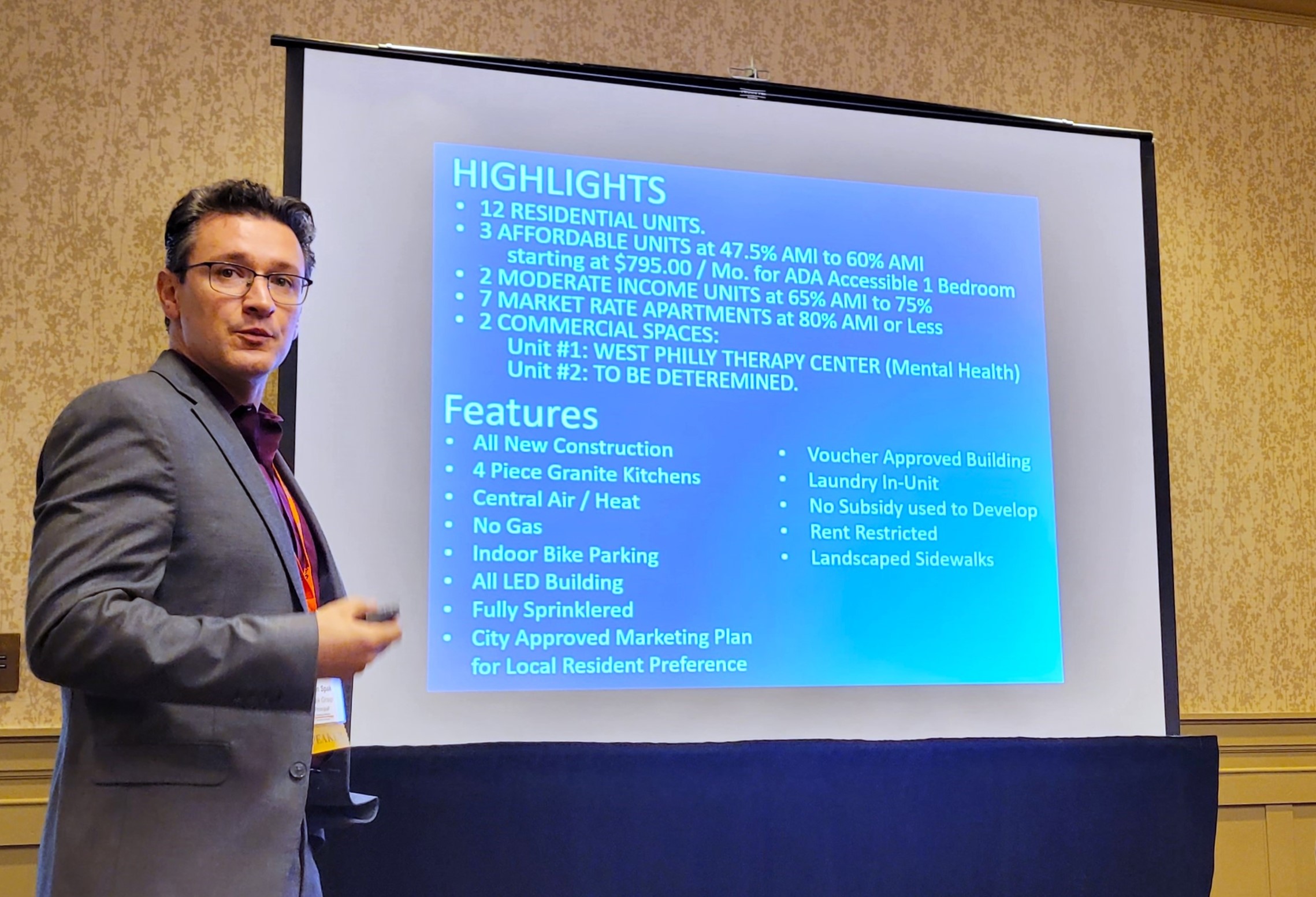(Editor’s note: This article is part of One United Lancaster’s coverage of the Housing Alliance of Pennsylvania’s 2023 Homes Within Reach conference.)
Could inclusionary zoning promote more affordable housing in Pennsylvania?
Governments do have policy options that, if used judiciously, can promote new housing construction at lower price points, Temple University professor David Feldman said. Done wrong, however, inclusionary zoning can backfire, deterring development and reducing the housing supply.

Feldman was one of three panelists in a session on inclusionary zoning at the Homes Within Reach conference held earlier this month in Hershey. He teaches planning and community development and is a member of the state Planning Board. In February, the board released an “Affordability and Inclusionary Zoning Toolkit”; Feldman led the committee that researched and wrote it.
“Inclusionary zoning,” or “IZ,” refers to policies designed to get developers to provide for affordable units when they build higher-cost “market rate” housing. IZ can be incentive-based or mandatory; in many cases, developers can satisfy requirements by paying a fee into a designated fund.
IZ is controversial: Proponents say it promotes mixed-income development and counters “exclusionary zoning,” regulations such as large lot sizes and parking minimums that exclude those of limited means. Critics say IZ, by raising development costs, reduces housing supply, contrary to its stated intent.
At the end of the day, projects have to “pencil out,” Feldman said: A development that doesn’t bring in enough revenue to cover its debt service won’t get financed.
“If the numbers don’t work, nothing gets built,” he said.
A case in point: Philadelphia’s ordinance requiring larger projects in certain areas to include 20% affordable units. Absent an offsetting subsidy, that’s simply too much for a developer to absorb, Feldman said, and since the measure passed, none has tried: “What we got was 20% of zero.”
The Spak Group
Ryan Spak is the founder of the Philadelphia-based Spak Group. It killed three projects it had in the pipeline when the ordinance passed, he said.
Spak described his company as an “equitable developer.” He said he created its business model after doing a few projects in West Philadelphia and realizing he was contributing to gentrification.

Spak said the Spak Group avoids affordability incentive programs like the low-income housing tax credit (LIHTC) because the cost is disproportionate to the benefit. A LIHTC project can easily cost more than twice as much per unit as its unsubsidized counterpart, a state of affairs he described as “insane and ridiculous.”
Instead, Spak Group keeps its costs low, allowing it to keep rents low. Many of its units are rented by individuals using Housing Choice Vouchers; a number of units are covered by voluntary deed restrictions reserving them for lower-income tenants.
Spak expressed frustration with Philadelphia’s government and City Council. It has gotten to the point, he said, that his company is looking to do projects elsewhere — such as in Reading, where it is partnering with the redevelopment authority on converting two vacant warehouses into a residential complex.
Affordability tools
Feldman said that in most of Pennsylvania, questions about inclusionary zoning are moot: The population is stagnant or falling, so development of any kind is correspondingly minimal. Just 23 of the state’s 67 counties, mostly in the southeast, account for its population growth. (Lancaster County is one of them, growing 6.5% from 2010 to 2020.)
For that reason, the State Board’s inclusionary zoning study committee took a broad view of its mission, looking at all the tools available to jurisdictions to promote affordable development. Generally speaking, there are five, Feldman said:
- Acquiring land and providing it to developers at nominal cost
- Adjusting zoning to reduce cost or increase potential returns (i.e., allowing higher density, reducing parking requirements)
- Expediting the review and approval process
- Tax abatements
- Subsidies
The committee’s report recommends several regulatory reforms for localities to consider. One example: Easing restrictions on manufactured homes, which are disallowed in many areas. Manufactured homes are much higher quality than they used to be, the report says, and relaxing prohibitions on them could not only reduce housing costs but boost Pennsylvania’s economy, as the state is a major producer of them.

Yocasta Lora, an advocate and spokeswoman for AARP, said her organization is promoting the wider adoption of accessory dwelling units: Backyard cottages, garage conversions and the like. Reforming zoning codes to allow them is an easy way for municipalities to promote affordability, she said.
They offer other benefits, too, she said: Promoting intergenerational connections, enhancing family economic stability (thanks to the extra income stream), reducing sprawl and more.
The upkeep of existing housing stock is another affordability consideration. Many seniors on fixed incomes struggle to afford home repairs: The Whole Home Repair fund is helping, but it’s insufficient.
Meanwhile, apartment complexes built several decades ago as affordable housing are being converted to market rate when their deed restrictions expire, often to cover the cost of essential but expensive renovations.
Directing inclusionary zoning funds to making those repairs and keeping those units affordable would be prudent and cost-effective, the committee’s report says.
Ultimately, the committee’s conclusions regarding inclusionary zoning were largely negative. Mandatory inclusionary zoning doesn’t work without offsetting subsidies, it said, and often drives market rents upward; voluntary inclusionary zoning has some potential, but not enough to be a “main driver” for affordable housing.
One audience member at the session objected, pointing to examples in Pittsburgh, State College and the U.S. as a whole. Saying it doesn’t work is a “misstatement,” he insisted. Feldman said he’d be willing to revisit the question.
Spak said inclusionary mandates can work if they’re flexible and policymakers “understand the math” — but in practice, that’s not how things play out.
If a mandate only reflects a moral stance, not the economics, he said, “you’ll never produce units.”







